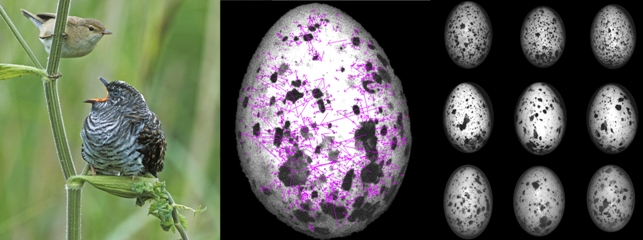Podcast: Play in new window
BOB HIRSHON (host):
Fighting phony eggs. I’m Bob Hirshon and this is Science Update.

Common cuckoos lay their eggs in the nests of other birds, tricking them into raising their young. They get away with this by laying eggs that look almost identical to those of the host parents, according to Harvard evolutionary biologist Mary Caswell Stoddard.
MARY CASWELL STODDARD (Harvard University):
So w e can think of this sort of like the cuckoo being the counterfeiter, it’s forging the patterns of the host egg.
HIRSHON:
But the cuckoos don’t always get away with the ruse. Stoddard and her colleagues used a mathematical algorithm to identify signature patterns that may help host birds distinguish their own eggs from those of cuckoos. They found that host species which have experienced the most intense egg mimicry from cuckoos have also evolved the most recognizable patterns.
STODDARD:
From an evolutionary standpoint, I think we’ll find that visual signatures may be a very powerful defense against parasite trickery.
HIRSHON:
I’m Bob Hirshon, for AAAS, the science society.
